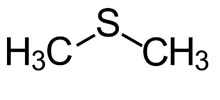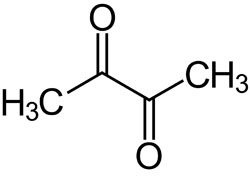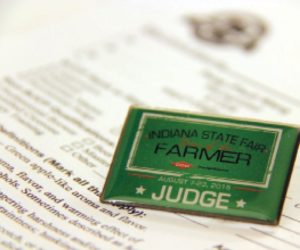Figuring Out Off-Flavors
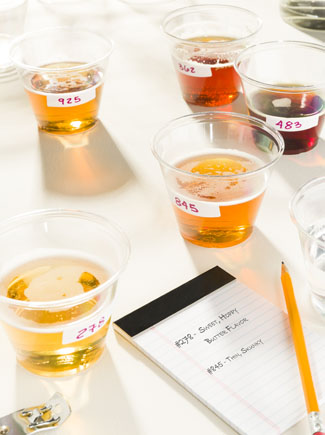
There has been a general agreement amongst brewers over a class of flavors that indicate that something went wrong with the brewing process or fermentation, however — most beer people know them as off-flavors. Getting to know and recognize off-flavors is somewhat difficult for the average homebrewer without significant monetary resources, but it’s definitely not impossible. With some guidance, even the casual beer geek can set up an affordable off-flavors tasting panel with friends. Let’s talk about some sensory basics first before getting into the nitty-gritty of off-flavors.
Sensory Basics
There are some bigger breweries out there that can use expensive pieces of equipment to precisely measure attributes of off-flavors in their beer. However, most craft and homebreweries have to utilize the most precise, cheap, and fickle instrument of all — the human palate. It’s a fact that we humans can detect thousands of flavor and aromatic chemical compounds to such a degree that the fanciest gas chromatograph with mass spectrometry can’t hold a candle to our ability to detect off-flavors. The only thing that gets in our way is bias.
The ultimate goal of sensory science is to utilize humans as a computer to detect aroma and flavor chemical compounds and to prevent bias from interfering with the accuracy of that result. The human psyche is the biggest source of bias in any taste panel. In order to get accurate data from people, you really need to remove as much bias from the tasting as you can. When I mention bias from a sensory standpoint, I mean a wide range of influences on tasting that include both physical and mental biases. Physical biases are when something physically biases your analysis one way or another. For example: Did you have coffee immediately before tasting or put on cologne or perfume? The coffee can interfere with your taste buds ability to taste certain flavors. Strong smells like perfume can also cause you not to engage your palate fully. In general, physical biases are much easier to overcome with guidelines and rules for people to follow. Mental biases are largely psychological interferences and are much harder to overcome. Some examples include tasting when you know the purpose of the test or being distracted by some stimulus like loud music or conversation. It can even boil down to if you’re in a bad mood when you taste beer. Confirmation bias is a huge part of getting accurate data and why having blind taste tests are so important. Confirmation bias is where the person has a tendency to favor results that confirm their own preconceived notions. In sensory, this can be as simple as rating a certain hyped IPA higher in a panel because you heard that beer is great if you know that’s what you are tasting.
One key aspect about sensory analysis is removing ego from the equation, which is extremely hard to do. The best way to go about this is to taste any of your beer samples away from other people and come back together in order to go over the results. That will prevent one person from dominating the conversation (which tends to happen) and allow you to form your own opinion. The sensory coordinator or panel leader’s job (we will discuss this role in a moment) is to get the best data possible, so sometimes the panel leader will have to play psychologist or Judge Judy in order to do that.
Setting up the Panel
Organizing a taste panel is pretty easy — even for the average beer geek or homebrewer. The resources needed are pretty basic compared to the set up for a typical brew day. Here are some materials you’ll need:
• Panel Leader or Coordinator
• Table
• Prep area (such as a kitchen or study)
• Labels 1⁄2-inch X 1-inch (white Avery brand work well)
• Clear plastic cups
• Pen/pencils and notepads
• White tablecloth, butcher paper, or placemats
Before doing any tasting, the panel leader must first prep any samples for the panel in a side room so the panelists themselves don’t see what’s going on and can be blind to the test. It’s important for the panel leader to not be directly involved with the tasting, merely facilitating it and making sure the rules are obeyed. The labels are to mark the cups with the samples you’re pouring. If you’re planning on doing a blind taste test of commercial IPAs, for example, then it’s important to mark the cups with a number that corresponds to the sample you’re pouring. The temptation is to number the samples as 1, 2, 3, etc. The problem with that is even simple numbers like that will attribute bias to the test. It seems silly, but there are numbers that have certain pop cultural significance that might add the tiniest bit of bias to the selection (666, 777, 747, 101, etc.). It’s better to label samples with numbers like 327, 519, 631 instead. Those numbers aren’t very memorable or bias-inducing. You also want to make sure the panelists have the ability to take tasting notes. At Stone Brewing Co. (where I work), we’ve noticed that panelists have better taste-memory retention if they write down what they taste, even if they don’t look at those notes again. The white butcher paper or tablecloth is just there to help the panelist evaluate color and haze. Most tables are wood or dark-colored, which makes it hard to evaluate important visual characteristics of the beer samples. A white tabletop or placemat for each panelist will help with the evaluation immensely.
Off-Flavor Training
In the industry, we rely on off-flavor standards and continual training sessions in order to validate our tasters. These standards are available to the general public from places like Cicerone/Aroxa, FlavorActiv, and Siebel — but they tend to be somewhat expensive for the average homebrewer. The advantage of these standards are that they are easy to dose into enough beer for a large tasting and are concentrated enough to get a really good idea what off-flavors should taste like. Luckily, there are some widely-available commercial brands that exhibit some of the most common, and most importantly recognized, off-flavors that you can use as a suitable reference if you’re not willing to spend the money on standards.
First, I will give a disclaimer that I’m not in any way trying to throw shade on these breweries. The off-flavors in these brands are considered true-to-brand and an integral part of their individual flavor profiles.
Diacetyl – Pilsner Urquell. Pilsner Urquell from the Czech Republic is a great example of what happens when a brewery intentionally halts the fermentation process early. The Pilsner has a bit of the typical butter flavor and slightly slick mouthfeel that’s symptomatic of the vicinal diketone.
DMS – Rolling Rock. Rolling Rock was originally brewed in Latrobe, Pennsylvania. Their steam stacks were too high and the volatilized DMS condensed back into the kettle during the boil. However, it was bought out by AB-Inbev a few years ago. Inbev still brews this brand with its signature high-DMS character, which is lots of sweet corn and slightly sulfuric character that is indicative of the
off-flavor.
Acetaldehyde – Coors Light. Coors Light has an ever-so-slight apple or pumpkin seed characteristic. It’s going to be hard to pick up for the average untrained taster, but it is an aspect of the Coors Light flavor profile.
There’s also the ability to doctor regular beer in order to get some other off-flavors to develop. The most common is to heat up some beer to elicit oxidation off-flavors. The procedure is very easy. Just take a sample of your favorite beer (whether it’s homebrew or commercial) and place it in a hot part of your house (garage, laundry room, etc.) for a day or so and compare to a refrigerated sample. You’ll notice that any hop flavors will be subdued and the malt aspects will be enhanced. There will also be more papery/cardboard flavors that present themselves. This is a great taste panel idea for blind tastings with your friends. It definitely illustrates that refrigerating beer is the best way to go.
Another easy way to demonstrate off-flavors that develop from poor storage is to transfer some beer to a clear bottle or package and expose it to direct sunlight for 30 minutes or so to develop what’s known as “lightstrike.” You’ll develop skunkiness as the ultraviolet light reacts with iso-alpha acids in the beer to create the compound 3-MBT. This compound is also found in skunk spray. This is a pretty fast reaction and typically why you get some skunkiness if you have a beer in a clear glass while standing outside on a sunny day. Note that some larger breweries use stabilized hop extract to bitter their beer. They are hydrogenated (usually called tetra-hop) and therefore resistant to reactions with UV light, so be aware when trying this procedure out with various macro brands. There are many other off flavors in beer, too, which if you want to get serious about being a beer judge you should also learn (see the sidebar on page 100). Get in touch with a Beer Judge Certification Program (BJCP) chapter to learn more.
Train Your Palate
Training on off-flavors is straightforward. All you need is a panel leader to shove some off-flavor standards at you and tell you which off-flavor is what. The hard part is training your brain to pick up off-flavors when someone isn’t telling you what they are. Both the BJCP and Cicerone certification tests involve an off-flavor portion where you are blindly given samples of off-flavors and you’re supposed to know which is which. This can be replicated on a smaller scale at home with friends by using the panel method I described earlier. You would want to use standards from Aroxa or FlavorActiv for the best results since that’s what BJCP and Cicerone utilize, but even using some of the commercial examples will be enough to give the average taster a good idea what an off-flavor tastes like.
Using off-flavor standards is helpful for threshold testing, which is an extremely cool, but very laborious way of determining how sensitive you are to certain off-flavors. The idea is simple: You give a person successive flights of three beers each — one of the three cups is dosed with an off-flavor. The first flight of three has an off-flavor dosed to 3-6 times the average threshold of a taster. Most flavor standards use this as their base concentration. You see if the person can pick the off-flavor from the flight of three. If they can, then you can move beyond in progressive dilutions of the off-flavor until they get the selection wrong. Once you reach that point, you can do some simple dilution calculations to determine the threshold of that person’s off-flavor detection sometimes to the parts-per-billion level. This is pretty neat for determining what people are really sensitive to. As you can imagine, threshold testing is a powerful sensory tool to utilize in a commercial brewery. If you have a list of who your supertasters are for which off-flavor, you can call them in if you’re worried you have a certain off-flavor in a beer and have them verify it. The other neat thing is to have someone come away from the threshold test with a very good idea that they have a specific sensitivity to an off-flavor and a sort of superpower.
With a firm grasp of off-flavors and what causes them, you can move forward with how to improve your homebrews and achieve the next level of sensory awareness when trying new beer. It’s important to remember to know what you like in beer as well as the off-flavors. Beer is ultimately made to drink and enjoy, so remember that as you dive into sensory science. Sometimes you get lost if you look at the forest merely for the trees.
SIDEBAR 1 – OFF-FLAVORS CHEAT SHEET
DMS 
What is it?
DMS (dimethyl sulfide) exhibits itself as a canned vegetable or creamed corn flavor in beer.
How does it form in beer?
All malt contains a variant of the amino acid methionine called S-methyl methionine (SMM). SMM is pulled into the wort during mashing and lautering and as the wort is heated the SMM degrades and is converted into DMS. DMS forms at 180 °F (82 °C) and above in the brewhouse. This is why it is important to boil vigorously in the kettle uncovered to volatilize the DMS, and also why it is important to not hold wort in the whirlpool for excessive amounts of time — the DMS formed will not be flashed off. Any delays seen in the kettle and whirlpool process, the brew should be held in the kettle and then vigorously reboiled for 15 minutes before transferring to the whirlpool.
How do you solve the problem?
The volatility of DMS allows it to be removed from the wort and out the ventilation hood during the boil. Even after the wort is chilled to the point where SMM is no longer being converted into DMS, the whole corny story isn’t over yet. During fermentation, the carbon dioxide that is produced by the yeast has a scrubbing effect on the DMS, carrying some of it out of the beer. This happens more efficiently at higher temperatures since the fermentations are more vigorous, and for this reason ale fermentations are better at this than lagers. This is why many lagers tend to have somewhat higher levels of DMS than ales do.
Diacetyl 
What is it?
Diacetyl (2,3-butanedione) is well known as the “butter” compound in microwave popcorn. It presents itself as a buttery or butterscotch flavor in beer. It’s in the vicinal diketone (VDK) category of organic compounds.
How does it form in beer?
Diacetyl is a compound that naturally occurs during fermentation as alpha-acetolactate is oxidized and turns into 2,3 butanedione (diacetyl). As yeast complete the fermentation process they begin to take diacetyl back up into their cells and reduce it (chemically and quantitatively) through enzymatic action into acetoin and 2,3-butanediol — both of which do not impact flavor. The other way that diacetyl can form is via bacterial infection. Pediococcus is a well-known beer spoiling bacteria. In addition to souring the beer with lactic acid, it can also produce diacetyl in large amounts. You most often see this spoilage in dirty draft lines.
How do you solve the problem?
With ales, diacetyl usually presents itself if the beer is taken off of the yeast cake too early in fermentation. Yeast needs to be present in order to re-uptake the diacetyl in solution and metabolize it into flavorless compounds (namely, 2,3 butanediol). To help the yeast along, most brewers institute a “diacetyl rest” in which they raise the temperature of the fermenter a few degrees to stimulate the yeast into degrading the diacetyl. This diacetyl rest process is common with lagers since fermentation occurs at lower temperatures and their metabolism is sluggish as a result. Kraeusening with actively fermenting wort also will assist in the uptake of diacetyl by yeast.
Acetaldehyde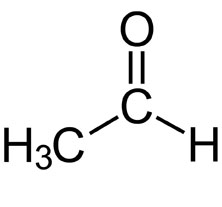
What is it?
Acetaldehyde smells and tastes like green apples. Sometimes it’s described as “oxidized apples” or “acetic cider.”
How does it form in beer?
Acetaldehyde is the immediate precursor to ethanol in fermentation. Like diacetyl, acetaldehyde is found in large quantities during early fermentation as the yeast produces it
en masse early in their metabolic cycle. If there is a high amount of dissolved oxygen present in the young beer, then the oxygen could react with ethanol and oxidize it back into acetaldehyde.
Acetaldehyde is also formed during too long sitting on the yeast. When yeast health is poor, cells can die and burst open (autolysis) which releases a lot of acetaldehyde into the beer. This is why it is important to stick to a strict yeast dumping regimen during aging, and avoid the heavy buildup of yeast in the cone of the fermenter.
How do you solve the problem?
Just like diacetyl, kräusening is the best way to remove excess acetaldehyde. Brewers need to make sure that they aren’t removing the beer before fermentation has finished. Raising the fermentation temperature a few degrees (diacetyl rest) will help resolve acetaldehyde issues. The other cause of acetaldehyde is too much dissolved oxygen in the beer. Brewers need to make sure that oxygen inclusion is minimal during active fermentation and any cellar activities (i.e. dry hopping).
SIDEBAR 2 – BJCP BEER FAULTS
The Beer Judge Certification Program (BJCP) has a list of beer faults that judges look for in beer competitions. To learn how to create these flavors, visit http://www.bjcp.org/course/Class5Lesson2OffFlavors.php
Acetaldehyde: Fresh cut green apples
Alcoholic/Hot: Spicy, vinous, warming from Ethanol and higher alcohols
Astringent: Mouth-puckering, lingering harshness, husk-like graininess
Diacetyl: Buttery, butterscotch, movie popcorn
DMS (Dimethyl Sulfide): Cooked corn
Estery: Fruity (strawberry, pear, banana, apple, grape, citrus)
Grassy: Fresh-cut grass, green leaves
Light-struck: Skunky, catty
Medicinal (chlorophenolic): Chloroseptic, medicine cabinet
Metallic: Iron, copper, coins, blood
Musty: Stale, moldy, cellar-like
Oxidized: Stale, papery, card board
Plastic (Phenolic): Band-aid, electrical tape, styrene
Solvent/Fusel: Hot burning on palate
Sour/Acidic: Lactic acid, citric acid, sharp, clean sourness
Smoky (Phenolic): Smoke-like, charcoal, burnt
Spicy (Phenolic): Clove, pepper, vanilla, etc.
Sulfury: Rotten eggs, burning matches
Vegetal: Cooked, canned or rotten vegetables (cabbage, celery, onion, asparagus, parsnip)
Vinegary: Acetic Acid, vinegar-like sourness
Yeasty: Bready, sulfury, yeast-like
* Source: http://www.bjcp.org/docs/Beer_faults.pdf

